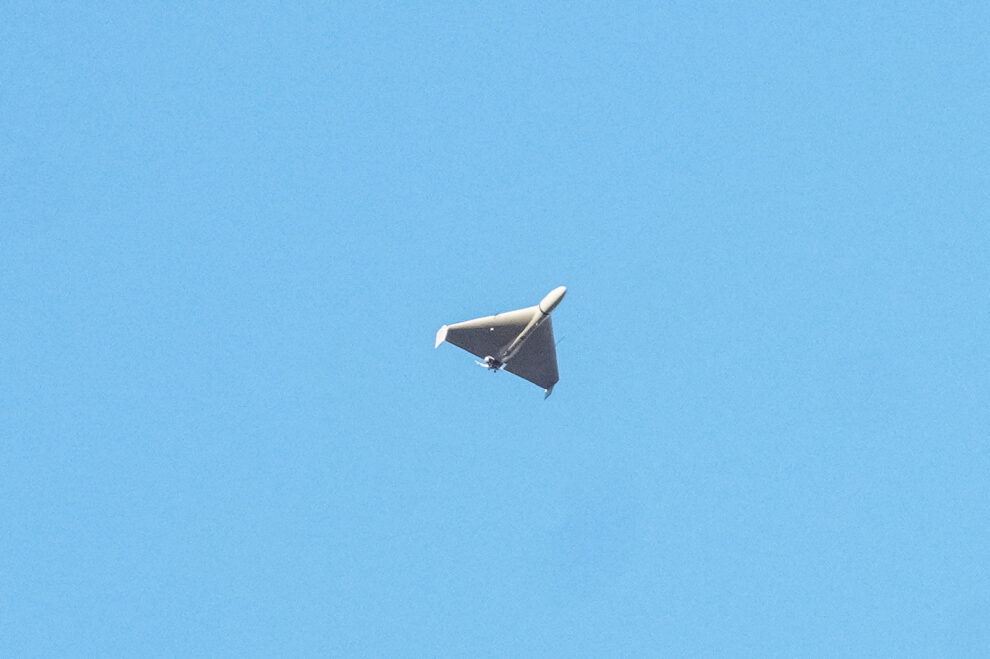Brussels, Frankfurt (16/6 – 33)
The European Union declared late last year that it intended to investigate how Russia acquired so-called “kamikaze drones” from the Islamic Republic of Iran, for battlefield deployment. While the production of these game-changing unmanned aerial vehicles (UAVs) was not reported until after the Russian invasion of Ukraine, numerous media claim the Russian military is deploying Iranian-made Geran-2 drones on the battlefield. This was confirmed through analysis of fragments from Russian Geran-2 drones shot down by Ukrainian forces; experts conclude that these UAVs are identical to the Shahed-136 kamikaze drones produced by Iran.
While the West has launched an investigation into the origins of the Russian drones, Iranian Foreign Minister Hussein Amir-Abdullohien, speaking to EU diplomatic chief Josep Borrell, categorically denied any involvement by his country.
The suspicion is that Iran supplied a batch of drones to Russia on the sly, in August 2022, clearly in violation of international sanctions; third-country “cut-outs” may be acting as surreptitious agents for transactions, in the effort to evade Western sanctions. Tajikistan is a suspect, as it has concluded a UAV manufacturing agreement with Iran.
Intelligence reports claim that several hundred drones, including heavy-duty ones that can carry weapons, are soon to be delivered, along with training of Russian military personnel in drone battlefield tactics by Iranians.
THE BPL PROGRAM IN RUSSIA
NPP Radar MMS JSC, a specialized Russian military company, manufactures three models of drones, loaded with magnetometers, sound reinforcement and automatic control protocol.
Radar MMS makes multi-purpose helicopter-type drones for surveillance, cargo delivery, geophysical research and other purposes. These can weigh up to 450 kg, carry a maximum payload of 100 kg, and fly within a radius of 60 km.
They are used for delivery of cargo, chemical spraying and counter-terrorist action. The Russian military is known to use CUB-BLA and Lancet kamikaze drones, along with Inokhodets and Forpost-R reconnaissance and strike drones.
Nevertheless, expert opinion assesses Russian UAV manufacturing as far behind in terms of technology.
Intelligence sources report that four Iranian companies deliver drones to Russia by air.

Iran is now setting up production of its UAVs in Tajikistan, among other countries. The “558th Aircraft Repair Plant” in Belarus may get into the business as well.
Iranian Dissidents reported the handover more than 3,500 combat drones to Russia, including Shahed-129, Mohajer-6, Shahed-136 and Shahed-131. Prior to that, the Russian army received about 2,000 units, flying about 400 of them into combat environments.
The results of a study of the wreckage of Russian Geran-2 drones, which Russia widely uses in Ukraine, indicate that they are Iranian Shahed-136 drones, a highly effective weapon, powered by licensed Chinese two-stroke MD 550 or 3W 50 hp engines, bearing distinctive Iranian markings. These engines were designed for scooters and mopeds, hence the distinctive Shahed-136 sound, nicknamed “moped”.
On 17 May 2022, Tajik Defense Minister General Sherali Mirzo and Iranian Armed Forces Chief of Staff General Muhammad Hussein Bokiri inaugurated a factory in Dushanbe for the production of Iranian Ababil 2 drones for photography and intelligence-gathering. They can also be armed with 40kg of explosives, turning them into cheap and effective guided missiles.
Several circumstantial factors support the theory that Tajikistan has been a key player in Russia’s acquisition of the Shahed drones. In August 2008, Russia and Tajikistan signed an agreement to expand military and military-technical cooperation.
Dushanbe has repeatedly stated that Moscow remains Tajikistan’s main strategic partner – and Tajiks are unwelcome in Ukraine.










